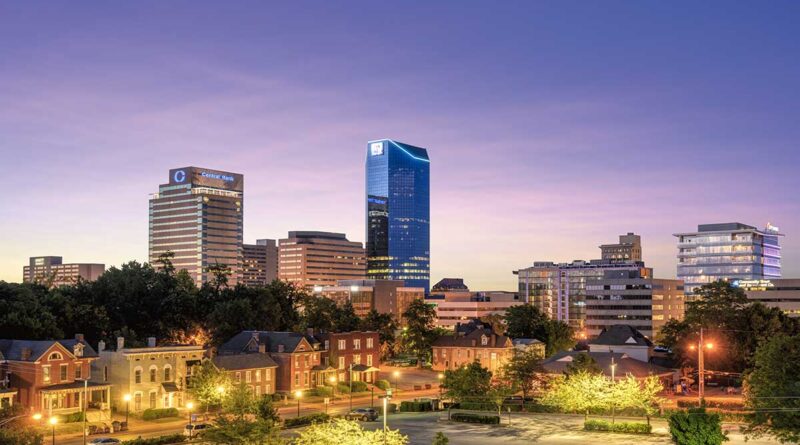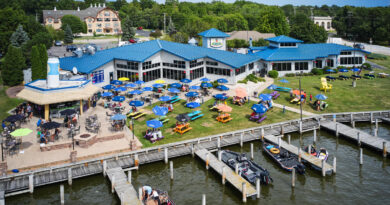History of Lexington Kentucky
Lexington, Kentucky, known as the “Horse Capital of the World,” is a city steeped in history, culture, and tradition. Located in the heart of the Bluegrass region, Lexington has played a pivotal role in the development of Kentucky and the broader United States. Its history is marked by Native American heritage, pioneering settlers, a strong equestrian culture, and significant contributions to American history and industry.
In this article, we’ll explore the fascinating history of Lexington, from its early days as a frontier settlement to its emergence as a major city in the American South. We’ll delve into its founding, key historical events, cultural milestones, and the city’s enduring legacy.
Pre-Colonial and Native American History
Before European settlers arrived, the region now known as Lexington was home to several Native American tribes, including the Shawnee, Cherokee, and the Iroquois Confederacy. The land was rich in natural resources, with rolling hills, fertile soil, and an abundance of game, making it an attractive area for these indigenous peoples. The region served as a hunting ground and a site for inter-tribal trade, with the surrounding forests, rivers, and grasslands providing sustenance and materials for survival.
Archaeological evidence suggests that the area had been inhabited for thousands of years, with numerous burial mounds and artifacts indicating a long history of Native American occupation. However, by the time European settlers arrived in the late 18th century, the native population had diminished due to conflicts with other tribes and the encroachment of European settlers in other parts of the continent.
The Founding of Lexington
Lexington was founded in 1775, making it one of the oldest cities west of the Allegheny Mountains. Its establishment came about during a significant moment in American history. On June 17, 1775, settlers in the region received word of the Battle of Lexington and Concord, the first battles of the American Revolution. In honor of this event, the settlers decided to name their new settlement “Lexington.”
The location was strategically chosen for its fertile land and proximity to the Kentucky River, which provided a vital transportation route. The settlers, led by William McConnell, built a stockade to protect themselves from potential Native American attacks, as the region was still contested territory. This early fortification laid the groundwork for the future growth and prosperity of the city.
Lexington During the American Revolution
While Kentucky was not a state during the American Revolution, the region played a crucial role as a frontier outpost. Lexington became a hub for the movement of goods, people, and information. The settlers in the area supported the American cause, and many joined militias to defend against British and Native American forces allied with the British Crown.
The Revolutionary War period was a time of hardship and danger for the settlers, as they faced constant threats from both British forces and hostile Native American tribes. Despite these challenges, the settlers persevered, and by the end of the war, Lexington had established itself as a permanent settlement and a growing community.
Early Growth and the Pioneer Era
Following the American Revolution, Lexington experienced significant growth as more settlers moved westward into the Kentucky territory. The city’s fertile land made it an ideal location for agriculture, particularly the cultivation of tobacco and hemp, which became the primary cash crops of the region. Lexington quickly emerged as an important economic center, with thriving markets, shops, and trade routes.
By the early 1800s, Lexington was often referred to as the “Athens of the West” due to its emphasis on education, culture, and the arts. The city was home to several institutions of higher learning, including Transylvania University, which was founded in 1780 and is one of the oldest universities west of the Alleghenies. Lexington’s intellectual and cultural life flourished during this period, attracting scholars, writers, and artists to the region.
The Role of Lexington in the War of 1812
During the War of 1812, Lexington played a significant role in the defense of the frontier. The city’s residents were staunch supporters of the war effort, with many men from the region joining the Kentucky militia. Lexington served as a key supply and training center for American forces, with the city’s industries producing goods and materials needed for the war.
One of the most notable figures from Lexington during this time was Henry Clay, a prominent politician and statesman who would later become known as the “Great Compromiser” for his efforts to keep the nation united during times of sectional conflict. Clay’s influence in both local and national politics helped shape the future of Lexington and the broader United States.
The Rise of the Horse Industry
Lexington’s association with horses dates back to the early 19th century, when the region’s fertile bluegrass pastures were recognized as ideal for breeding and raising thoroughbred horses. The mild climate, rich soil, and abundant limestone water contributed to the development of strong, healthy horses, making Lexington a center of the horse industry.
By the mid-1800s, Lexington was home to some of the most prestigious horse farms in the country. The city’s reputation as the “Horse Capital of the World” was solidified with the establishment of the Kentucky Horse Park, Keeneland Racecourse, and other equestrian facilities that continue to attract visitors and horse enthusiasts from around the globe.
Lexington and the Civil War
The Civil War was a tumultuous period for Lexington, as Kentucky was a border state with divided loyalties. While the state officially remained neutral at the start of the war, Lexington was a city deeply affected by the conflict. The city was home to both Union and Confederate sympathizers, leading to tension and conflict within the community.
Lexington was occupied by both Confederate and Union forces at different times during the war. The city’s location made it a strategic target for both sides, and several skirmishes and battles took place in the surrounding area. The war also had a profound impact on the local economy, particularly in agriculture and industry.
After the war, Lexington faced the challenges of Reconstruction and rebuilding. The city gradually recovered, but the legacy of the Civil War continued to shape its social and political landscape for years to come.
Post-War Growth and Industrialization
In the decades following the Civil War, Lexington experienced significant growth and industrialization. The city became a hub for manufacturing, particularly in the production of tobacco products, bourbon, and hemp. The construction of railroads further boosted Lexington’s economy by connecting it to major markets across the country.
The late 19th and early 20th centuries were a time of modernization for Lexington. The city saw the development of new neighborhoods, public buildings, and infrastructure. The establishment of electric streetcars, telephones, and other modern conveniences transformed Lexington into a more urbanized and connected community.
The Influence of Henry Clay
Henry Clay, one of Lexington’s most famous residents, played a crucial role in shaping both the city and the nation. Born in Virginia, Clay moved to Lexington in 1797 to practice law. He quickly became involved in politics, serving as a member of the Kentucky General Assembly and later as a U.S. Senator and Speaker of the House of Representatives.
Clay’s contributions to American politics are numerous. He was a leading advocate for the American System, a plan to strengthen the national economy through protective tariffs, a national bank, and internal improvements. Clay’s efforts to forge compromises between the North and South during times of sectional conflict earned him the nickname “The Great Compromiser.”
Clay’s legacy in Lexington is still visible today. His estate, Ashland, has been preserved as a museum and historic site, offering visitors a glimpse into the life and times of one of America’s most influential statesmen.
Education and the Founding of the University of Kentucky
Education has always been a cornerstone of Lexington’s identity, and this commitment to learning was further solidified with the founding of the University of Kentucky (UK) in 1865. Originally established as the Agricultural and Mechanical College of Kentucky, the institution grew rapidly and became the state’s flagship university.
The University of Kentucky played a crucial role in Lexington’s development, contributing to the city’s intellectual, cultural, and economic growth. Today, UK is a leading public research university with a wide range of academic programs, a strong athletics tradition, and a vibrant campus community.
The Great Depression and Its Impact on Lexington
Like much of the country, Lexington was deeply affected by the Great Depression of the 1930s. The economic downturn led to widespread unemployment, poverty, and hardship for many residents. However, Lexington also benefited from New Deal programs, which provided jobs and funding for public works projects.
During this period, several significant buildings and infrastructure improvements were constructed in Lexington, including schools, roads, and parks. These projects helped to modernize the city and laid the groundwork for future growth.
Lexington During World War II
World War II brought significant changes to Lexington, as the city mobilized to support the war effort. The establishment of military training facilities, such as the Blue Grass Army Depot, brought thousands of soldiers and defense workers to the area. The war also stimulated the local economy, with increased demand for agricultural products, manufacturing, and services.
Lexington’s residents contributed to the war effort in various ways, from participating in bond drives to working in war industries. The post-war period saw a boom in population and economic growth, as returning veterans settled in the city and new industries emerged.
Civil Rights Movement in Lexington
The Civil Rights Movement of the 1950s and 1960s had a profound impact on Lexington, as it did across the nation. African American residents of Lexington played a key role in the struggle for civil rights, challenging segregation and discrimination in schools, businesses, and public facilities.
Lexington saw several important civil rights milestones, including the desegregation of public schools and the University of Kentucky. The city’s African American community, particularly organizations like the Lexington chapter of the NAACP, worked tirelessly to achieve equal rights and social justice.
Modern Growth and Urban Development
In the latter half of the 20th century, Lexington continued to grow and modernize. The city expanded its infrastructure, including the construction of new highways, shopping centers, and residential neighborhoods. The growth of the University of Kentucky and the continued success of the horse industry further boosted Lexington’s economy and reputation.
In recent decades, Lexington has embraced urban revitalization and historic preservation. The city’s downtown area has seen significant redevelopment, with new businesses, restaurants, and cultural venues opening in restored historic buildings. Lexington has also become known for its vibrant arts scene, outdoor activities, and a strong sense of community.
Lexington Today: A Blend of Tradition and Innovation
Today, Lexington is a dynamic city that blends its rich history with modern innovation. It remains a global center for the horse industry, with world-renowned horse farms, equestrian events, and the Kentucky Horse Park drawing visitors from around the globe.
The city is also home to a thriving economy, driven by education, healthcare, technology, and manufacturing. Lexington’s commitment to preserving its historic character while embracing growth and change has made it one of the most livable cities in the United States.
Lexington’s cultural diversity, educational institutions, and vibrant downtown make it a city that honors its past while looking forward to the future. Whether you’re exploring its historic neighborhoods, attending a horse race at Keeneland, or enjoying the natural beauty of the Bluegrass region, Lexington offers a unique and welcoming experience for all.
Discover more from City Towner
Subscribe to get the latest posts sent to your email.



